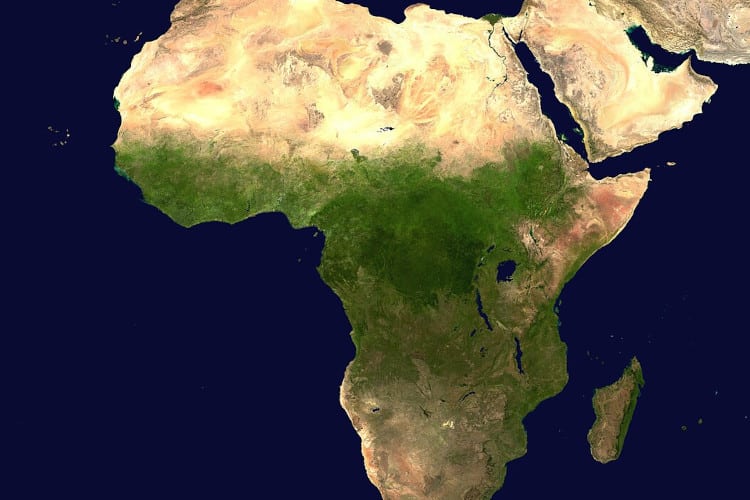
“NASA Satellite Information Shows Vegetation Appearing in Sahara Desert After Rise in Rainfall”
**Sahara Desert Witnesses Uncommon Greening Following Intense Rainfall**
The Sahara Desert, famous for its extensive, dry, and parched expanses, has recently undergone an unforeseen change. A unique weather phenomenon has resulted in substantial rainfall, triggering an extraordinary blossoming of flora in one of the world’s most barren regions. NASA’s Earth Observatory has released remarkable satellite images highlighting vegetation in areas of Morocco, Algeria, Tunisia, and Libya, which are usually desolate.
### An Uncommon Downpour and Its Effects
On *September 7th and 8th, 2024*, a strong extratropical cyclone deposited several inches of rain in parts of northwestern Africa. This weather system, originating over the Atlantic Ocean and advancing into the northern Sahara with significant force, produced rainfall of up to half a foot in certain locations. Such a level of precipitation is remarkable in a region where rainfall is often limited, with many areas of the desert receiving only a few inches annually, if any.
The intense rains stimulated the growth of previously dormant plants, especially in lower-lying areas like riverbeds that retain moisture more effectively. Vegetation such as shrubs and plants rapidly emerged in reaction to the sudden availability of water. NASA’s Terra satellite captured this phenomenon in imagery, showcasing what was once a harsh, arid desert, now speckled with green vegetation.
### The Revival of the Green Sahara?
This occurrence offers a glimpse into what the Sahara may have looked like thousands of years ago. Researchers, including Peter de Menocal, president and director of the *Woods Hole Oceanographic Institution*, assert that the Sahara was not perpetually a desert. Between 11,000 and 5,000 years ago, this area was abundant with vegetation, interspersed with lakes and rivers.
During the epoch known as the “Green Sahara” or “African Humid Period,” the region received significantly more rainfall than it does presently, fostering an environment reminiscent of a savanna. When circumstances allow, such as through rare precipitation events, the dormant plant seeds in the desert can spring to life once more. The seeds of flora and shrubs lie inactive in the hard, dry earth, awaiting moisture for an opportunity to thrive, however fleeting that period may be.
### Climatic Influences at Work
So, what exactly triggered this remarkable weather? As noted by NASA and the *National Oceanic and Atmospheric Administration’s (NOAA) Climate Prediction Center*, an atypical northward migration of a weather system that usually stays farther south affected the Sahara. This system, part of the *Intertropical Convergence Zone (ITCZ)*, is crucial in shaping tropical rainfall patterns. Typically, the ITCZ is located closer to the equator, but shifting atmospheric conditions have allowed it to push storm systems further into the southern Sahara since mid-July.
The ITCZ’s advancement into the Sahara is uncommon but can be intensified by larger climatic factors. De Menocal explains that rising ocean temperatures in the northern Atlantic have played a role in this shift, drawing moisture from tropical areas toward the normally parched desert. Such extreme weather events may become more frequent as climate change transforms global weather patterns.
### The Prospects for Rainfall in the Sahara
Although this green transformation is momentary, it suggests a potential for more regular rainfall by the century’s end. De Menocal anticipates that in the coming decades, as ocean temperatures continue to rise, the ITCZ rain belt may shift even farther northward. If this occurs, regions like the Sahara could see increased rainfall compared to current levels, though whether this will enable a return to its ancient verdant condition remains uncertain.
“Many years from now, the rain belt’s position could revert to its original location, potentially even shifting to the opposite hemisphere,” de Menocal remarked.
### NASA Monitors a Changing Terrain
The images produced by NASA’s *Earth Observatory* vividly illustrate the significant changes brought about by the rainstorm. Photographs taken on September 10, 2024, reveal the desert adorned with green patches, some transforming into vibrant fields. These visuals have documented the flooding of previously dry riverbeds and the replenishing of lakes that usually lie empty.
Just days prior, the landscape appeared barren, mirroring the harsh reality of one of the globe’s most unforgiving environments. NASA’s satellites have tracked other water-related phenomena in the Sahara Desert in recent years, capturing visuals of rare meteorological events, including floods and even ice forming in certain areas during chilly conditions.
### Related Weather Anomalies
This is not the first instance of the Sahara encountering an unusual weather event linked to water. In *early 2021*, the desert saw an exceptional dusting of ice, with shimmering ice crystals resting atop the sand dunes. Though such occurrences are not standard, they highlight the unpredictable nature of climate change and its capacity to engender stark contrasts in traditionally stable settings.
### Conclusion
The remarkable sight of the Sahara Desert